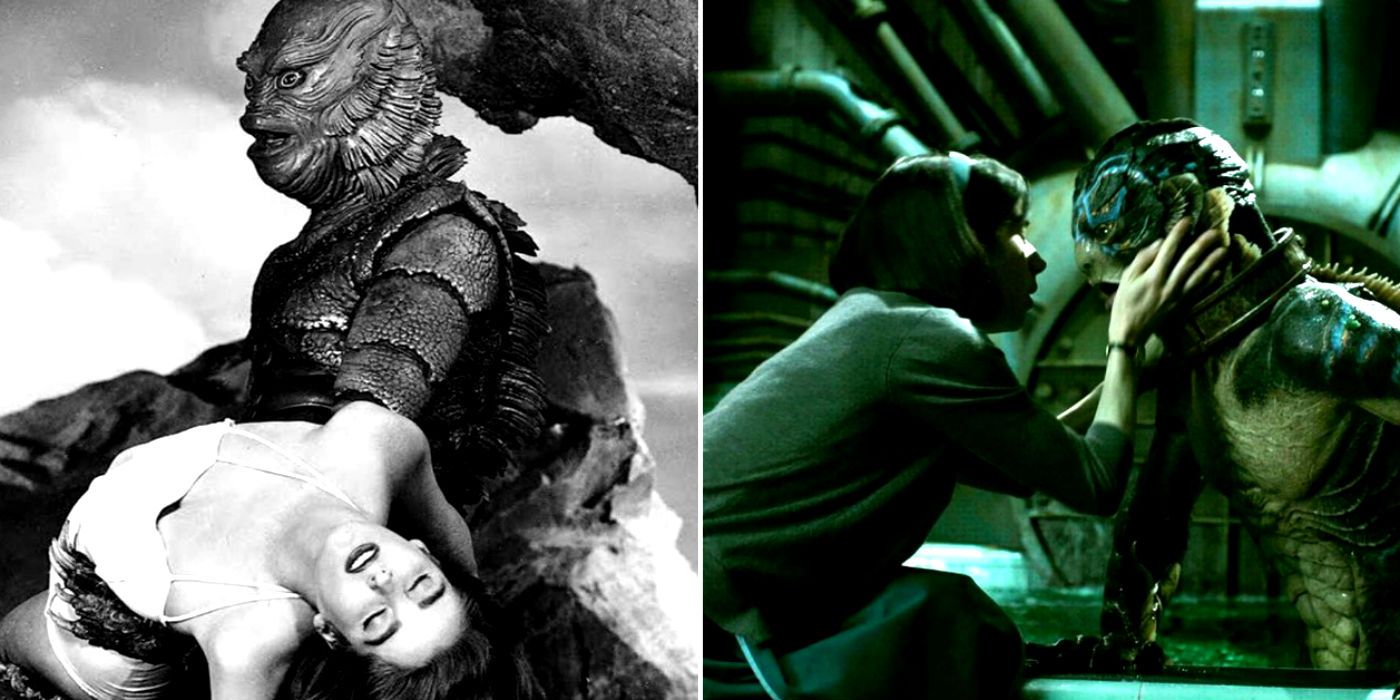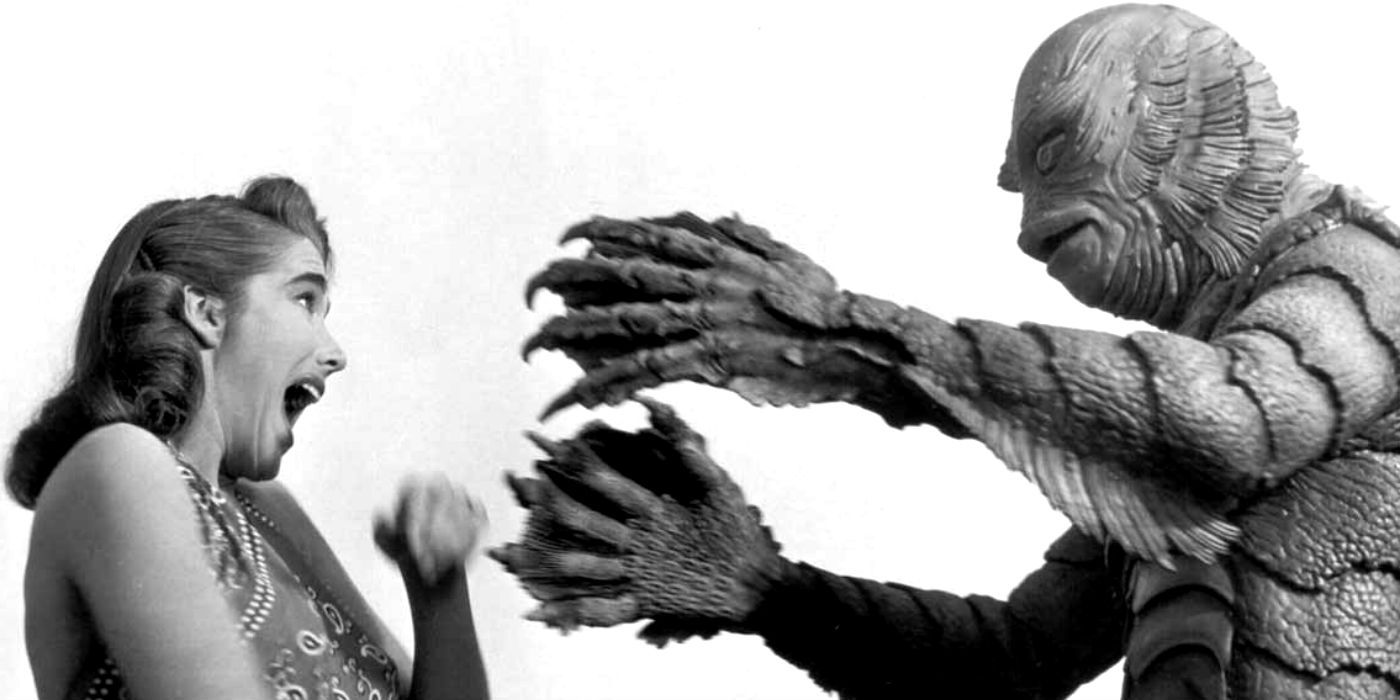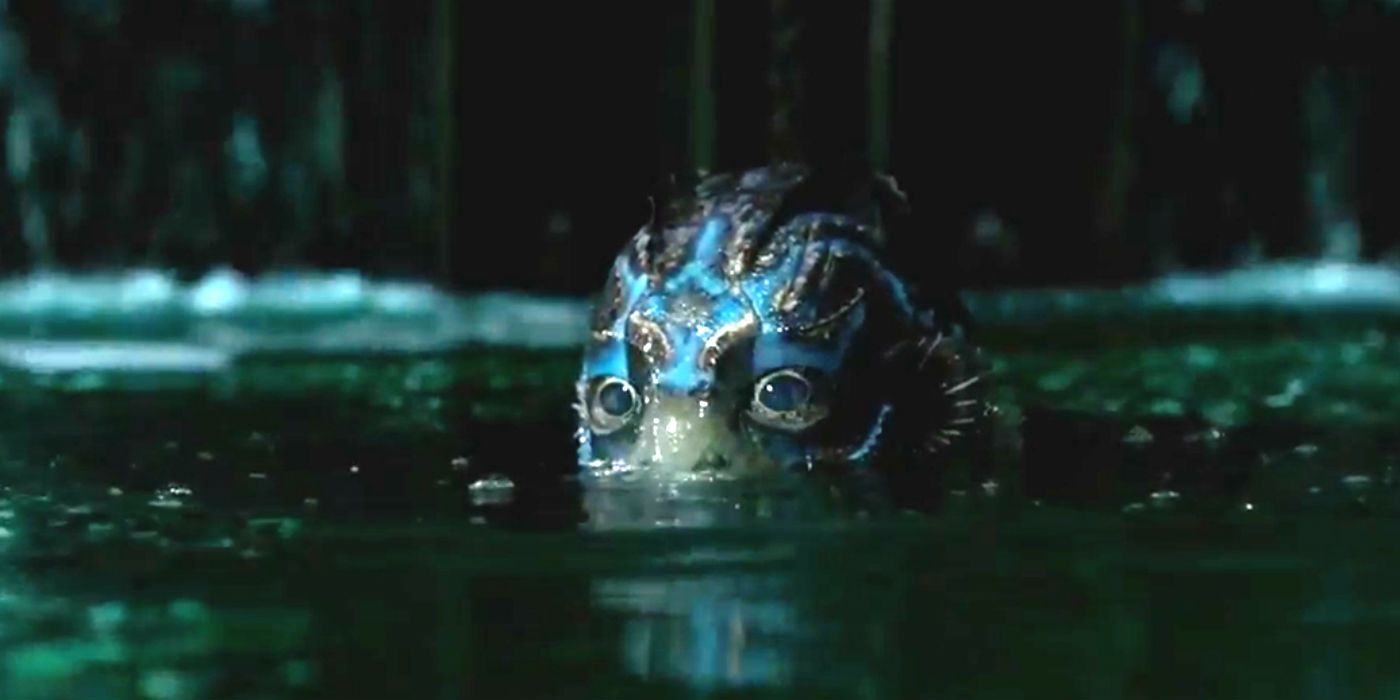The Shape of Water, which won the 2018 Oscar for Best Picture, felt like the remake of Creature from the Black Lagoon horror fans deserve; it wasn't intended as a remake, but had the original film's spirit throughout.
The original 1954 film told the story of the Gill-Man (Ricou Browning), who was discovered by ichthyologists during a geology expedition in the Amazon, and became curious about humans and human society with tragic results. Del Toro's film, The Shape of Water, also takes a scientific angle of discovery when "The Amphibian Man" (Doug Jones) is exploited for American research intended to hopefully aid in an unseen advantage over the Russians during the Cold War. Both stories are punctuated by humanity's darker nature when their lead female protagonists (Julie Adams and Sally Hawkins, respectively) get the creatures' attention.
Though The Shape of Water is explicitly a love story, Creature from the Black Lagoon created a sympathetic villain, just as other classic monster movies like Frankenstein and King Kong did, telling a Beauty and the Beast tale for the ages; since it debuted in the '50s, the underlying cautionary tale about feminism and female sexuality were also woven in the strands of Creature's narrative.
Del Toro Was Inspired By The Creature As A Child
Del Toro took inspiration from Creature from the Black Lagoon in his script for The Shape of Water, recalling his fond childhood memories about the tale. He wanted to show a softer side of the story, one that had a happier ending (of sorts) and wove the core of Creature into a love story that never transpired between Kay and the Gill-Man before, and never would have back in the 1950s. He even considered shooting his film in black and white as another nod. The Shape of Water clearly denotes the director's lifelong fondness for monsters and outcasts by making his "Amphibian Man" a misunderstood, relatively harmless creature who isn't any sort of threat to humankind until the scientists make him into one. His protagonist, Elisa, befriends and falls in love with del Toro's creature because, since there is no universal language they share, they learn to communicate and understand one another. In Creature from the Black Lagoon, the Gill-Man is more immediately dangerous, but never seems to be monstrous until his home is potentially threatened by outside invaders.
Unlike Elisa, Kay seems repulsed by the creature and sees him as a monster even though he's never done anything to harm her and acts in what seems to be reactionary and defensive rather than cold-blooded murder. In Creature, the underlying message denotes a lack of understanding by humans and a curiosity by non-humans that has been misinterpreted due to humankind's ever-present fear of what they don't understand. The Shape of Water tries to bridge that trait of humanity by pitting the dark side of knowledge against the more innocent facets of exploration; Elisa wants to understand the creature because she sees good in him, but the scientists want to exploit him for their own gain, not even caring that he's a living being when they subject him to their brutal experiments.
The Dark Universe Is Returning (But Should Skip One)
Blumhouse and Universal are teaming up to resurrect the Dark Universe. With The Invisible Man slated for a 2020 release and The Invisible Woman on the docket for the not-too-distant future, it's practically inevitable that audiences will see new Frankenstein, The Wolf Man, and Dracula movies. However, even though the Gill-Man is one of Universal's most iconic classic monsters and The Shape of Water was an unintentional remake, it was thoroughly satisfying and retold the story beautifully. Guillermo del Toro has a knack for bringing monster movies to life, so while the other Dark Universe films could be done extraordinarily well, there seems to be little improvement that could be done with this one.



